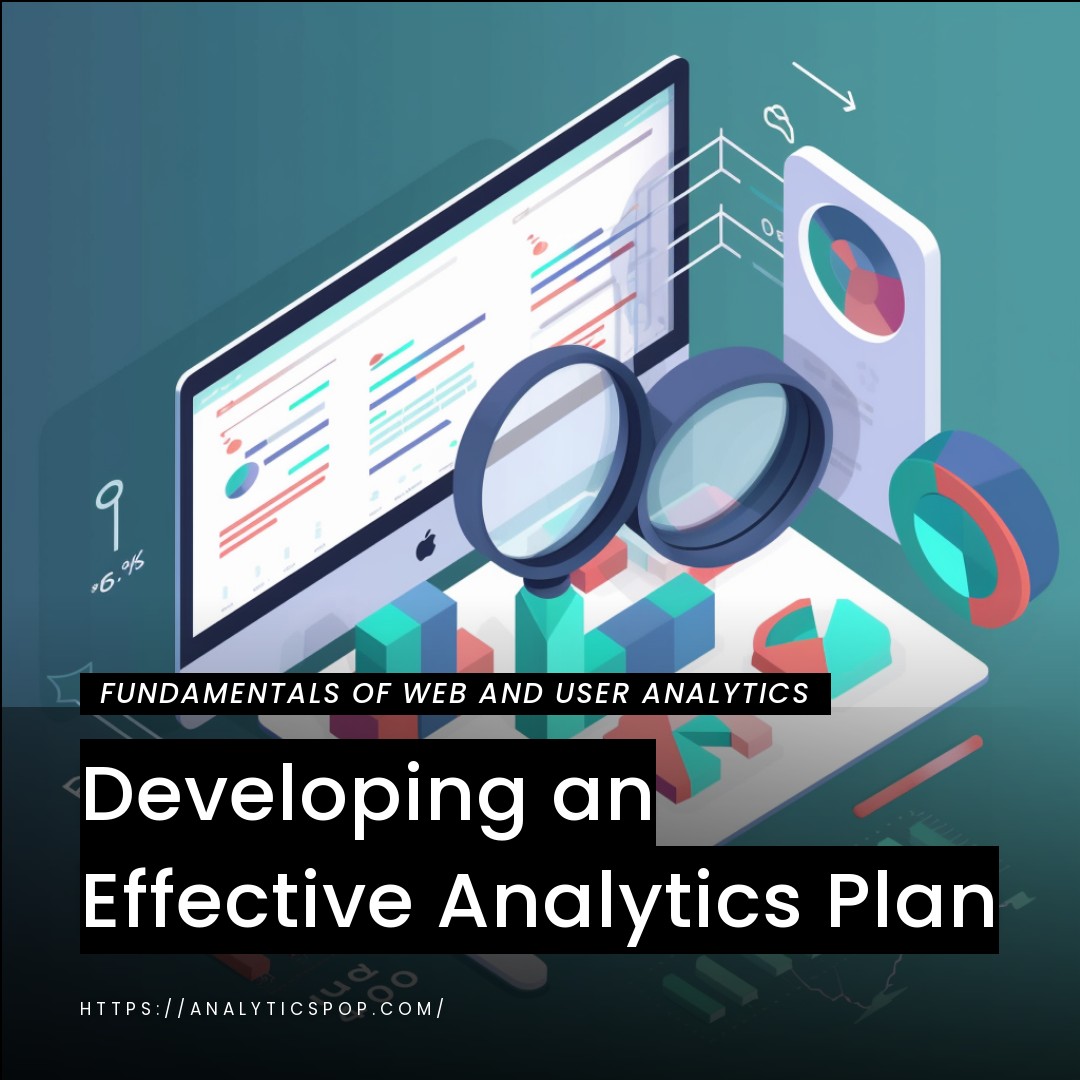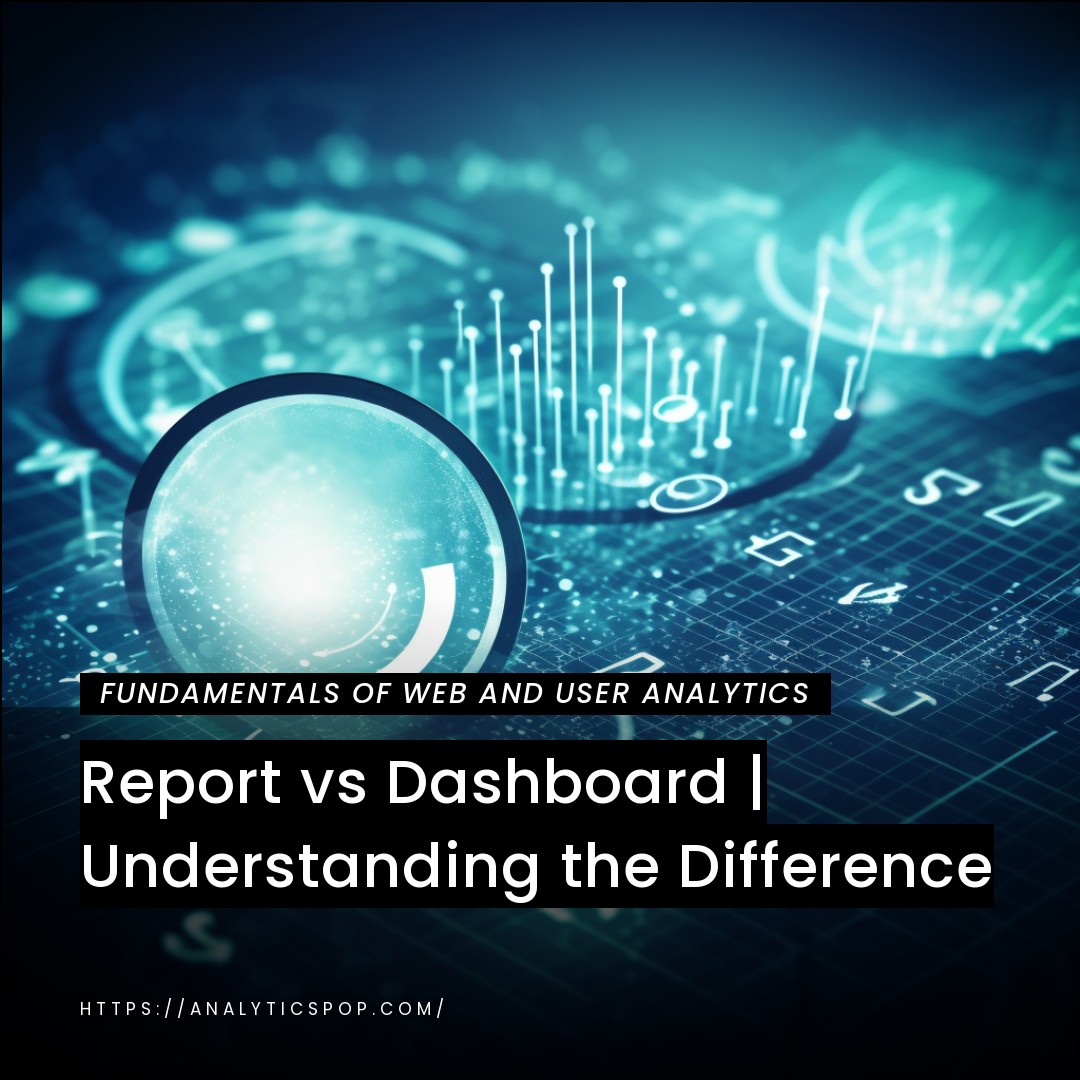Developing an effective analytics plan is essential to any successful business strategy.
- The first step is to define your goals and objectives clearly. This will help you determine which metrics to track and how to interpret the data you collect.
- Next, you need to identify the data sources you will use: website traffic data, social media analytics, or customer data. It’s essential to collect accurate and relevant data, as this will inform your decision-making process.
- Once you have your data, you’ll need to analyze it to gain insights into customer behavior, trends, and patterns. To do this effectively, you’ll need to use data visualization tools that make it easy to understand and interpret the data. This can help you optimize your marketing campaigns, improve your products and services, and make better business decisions.
- Finally, it’s essential to regularly review and update your analytics plan to ensure that it continues to meet your changing business needs.
By following these steps, you can develop an effective analytics plan that helps you achieve your business goals and stay ahead of the competition.
What is an analytics plan?
An analytics plan is a comprehensive strategy that outlines how data will be collected, analyzed, and used to inform business decisions. The program typically includes specific goals and objectives, a list of data sources, an analysis methodology, and a method for reporting and communicating insights to stakeholders.
An analytics plan aims to provide a framework for collecting and analyzing data in a structured and consistent manner so that insights can be gained and decisions can be made based on evidence rather than assumptions.
An effective analytics plan should be tailored to the business’s specific needs and should consider factors such as the target audience, the available data sources, and the business goals.
By following an analytics plan, businesses can gain a deeper understanding of their customers, identify trends and patterns, and make data-driven decisions that help them stay ahead of the competition.
Why is an analytics plan essential?
An analytics plan is essential for several reasons.
- First, it provides a clear roadmap for collecting and analyzing data, which helps businesses make informed decisions based on evidence rather than assumptions. This can be especially valuable in today’s data-driven business environment, where the amount of data available can be overwhelming without a structured approach to analysis.
- Second, an analytics plan ensures that data is collected consistently and accurately, critical for making reliable comparisons over time. By establishing standardized data collection processes, businesses can avoid inconsistencies and errors that can compromise the validity of their findings.
- Third, an analytics plan helps businesses prioritize their efforts and focus on the most critical metrics. By identifying specific goals and objectives, companies can ensure that they are measuring the right things and that their data analysis efforts are aligned with their overall business strategy.
- Finally, an analytics plan facilitates communication and collaboration among stakeholders, which can help ensure everyone is on the same page and working towards a common goal.
By providing a clear framework for data analysis, an analytics plan can help businesses make more informed decisions, improve their products and services, and ultimately achieve more tremendous success.

Defining Business Goals and KPIs
Defining business goals and KPIs (key performance indicators) is crucial in developing an effective analytics plan. Business goals should be specific, measurable, achievable, relevant, and time-bound (SMART). By defining clear business goals, businesses can focus their efforts on what matters most and measure progress over time.
KPIs are the metrics used to track progress toward these goals. KPIs should be chosen based on their relevance to the business goals and data availability.
KPIs include website traffic, conversion rates, customer satisfaction scores, and revenue growth. It’s important to choose meaningful and actionable KPIs rather than simply tracking metrics for the sake of it.
When defining business goals and KPIs, it’s also essential to consider the target audience. Different stakeholders may have other priorities and require different types of data.
For example, executives may be more interested in high-level metrics such as revenue growth, while marketing teams may be more interested in customer acquisition and retention metrics.
Once business goals and KPIs have been defined, it’s essential to establish a baseline for each metric and set targets for improvement. Regular monitoring and reporting of these metrics can help businesses track progress toward their goals, identify areas for improvement, and make data-driven decisions that drive business success.
Data Sources
Data sources refer to the various data types that can be collected and analyzed in an analytics plan. Many types of data sources exist, including website analytics, social media metrics, customer feedback, sales data, and more.
Choosing suitable data sources is critical for developing an effective analytics plan. Data sources should be selected based on their relevance to the business goals and data availability. Collecting accurate and relevant data is essential, as this will inform decision-making processes and ensure that insights gained from the analysis are actionable.
One common data source is website analytics, which can provide valuable insights into user behavior, such as how long visitors stay on a page, which pages are most popular, and which pages have high bounce rates.
Social media metrics are another essential data source, providing insights into engagement rates, follower growth, and customer sentiment. Customer feedback, such as surveys or reviews, can provide valuable insights into customer preferences, pain points, and satisfaction levels.
It’s important to choose data sources that are meaningful and actionable rather than simply collecting data for the sake of it. By focusing on the most relevant data sources, businesses can better understand their customers, identify trends and patterns, and make data-driven decisions that drive business success.
Data Collection and Management
Data collection and management are critical components of any analytics plan. To effectively collect and manage data, businesses must establish transparent data collection processes and ensure data is stored securely and accessible for analysis.
One of the first steps in data collection is determining what data needs to be collected and from which sources. This can involve setting up tracking tools such as Google Analytics, CRM software, or social media monitoring platforms. Data collection processes should be standardized to ensure consistency and accuracy, and staff should be trained to follow these processes.
Once data has been collected, it needs to be stored and managed in a way that is secure and accessible for analysis. This can involve using cloud-based storage solutions, data warehouses, or other data management tools. Data should be organized to make it easy to access and analyze, and staff should be trained on how to use these tools effectively.
Data management also involves ensuring that data is accurate and up-to-date. Data quality checks should be performed regularly to ensure consistent and precise data. Regular data cleaning processes should be implemented to remove duplicate or erroneous data.
Effective data collection and management are critical for developing an effective analytics plan. By collecting and managing data in a structured and consistent manner, businesses can gain valuable insights into customer behavior, identify trends and patterns, and make data-driven decisions that drive business success.

Data Analysis and Visualization
Data analysis and visualization are essential components of any analytics plan. Data analysis involves using statistical methods and software tools to interpret and make sense of the data collected. In contrast, data visualization refers to presenting this data in a visual format that is easy to understand and interpret.
Businesses need to identify the most relevant metrics and data sources to conduct practical data analysis and use statistical methods and software tools to analyze this data. This can involve techniques such as regression analysis, clustering, or segmentation.
Data analysis aims to gain insights into customer behavior, identify trends and patterns, and make data-driven decisions that drive business success.
Once data has been analyzed, it’s essential to present it in an easy-to-understand and interpretable way. This is where data visualization comes in. Data visualization involves giving data in a visual format, such as graphs, charts, or tables, that makes it easier to identify patterns and trends.
Effective data visualization can help stakeholders quickly understand complex data and make informed decisions based on evidence.
Many different tools and software packages are available for data analysis and visualization, including popular options such as Excel, Tableau, and Power BI. The key is to choose the right tools for the business’s specific needs and to ensure that staff is trained to use these tools effectively.
Practical data analysis and visualization are critical for gaining insights into customer behavior, identifying trends and patterns, and making data-driven decisions that drive business success.
Action Plan
An action plan is a roadmap that outlines the steps that need to be taken to achieve business goals based on insights gained from data analysis. A practical action plan should be based on clear, measurable objectives and should identify the specific actions that need to be taken, the timelines for each step, and the individuals or teams responsible for each activity.
- The first step in developing an action plan is to review the insights gained from data analysis and identify the key takeaways. Based on these takeaways, specific goals should be identified, and the actions that need to be taken to achieve these goals should be outlined.
For example, suppose the data analysis reveals that customer satisfaction is low. In that case, the action plan might involve improving customer service training or implementing a new feedback system to gather customer feedback more effectively. - Once the goals and actions have been identified, the next step is establishing timelines for each action and assigning responsibility to specific individuals or teams. This helps ensure that everyone is clear on what needs to be done and when and that progress towards the goals is tracked effectively.
- Finally, it’s essential to regularly review and update the action plan to ensure that it remains relevant and aligned with the changing needs of the business.
By following an effective action plan, businesses can make data-driven decisions that help them achieve their goals and stay ahead of the competition.
FAQ's
Q: How long does it take to develop an analytics plan?
The time it takes to develop an analytics plan can vary depending on the size and complexity of the business, as well as the specific goals and objectives of the project. Generally speaking, developing an effective analytics plan can take anywhere from a few weeks to several months.
- The first step in developing an analytics plan is clearly defining business goals and objectives. This can involve consulting with key stakeholders, analyzing market trends, and researching customer behavior. Depending on the scope of this research, this step can take several weeks to several months to complete.
- Once business goals have been defined, the next step is identifying the most relevant data sources and establishing data collection and management processes. This can involve setting up tracking tools, training staff on data collection procedures, and implementing data management systems. Depending on the size and complexity of the business, this step can take several weeks to several months to complete.
- Data analysis and visualization can also be time-consuming processes, especially if large amounts of data need to be analyzed. This can involve using statistical methods, software tools, and data visualization techniques to interpret and present data in a meaningful and actionable way.
Developing an effective analytics plan requires careful planning, research, and execution. While the time it takes to complete each step can vary, the result is a plan that provides businesses with valuable insights into customer behavior, identifies trends and patterns, and helps them make data-driven decisions that drive business success.

Q: Can an analytics plan be updated over time?
Yes, an analytics plan should be regularly reviewed and updated over time to ensure that it remains relevant and aligned with the changing needs of the business. As business goals, data sources, and analysis techniques evolve, updating the analytics plan to reflect these changes is essential.
Reviewing and updating the analytics plan can help businesses stay ahead of the competition and make data-driven decisions that drive business success. This can involve updating data sources, revising analysis techniques, or adjusting the action plan to reflect business goals or market conditions changes.
Regular updates to the analytics plan can also help businesses identify areas for improvement and optimize their data collection and analysis processes. By incorporating new data sources and analysis techniques, companies can gain deeper insights into customer behavior, identify recent trends and patterns, and make more informed decisions.
Regularly reviewing and updating the analytics plan is critical for ensuring that it remains relevant and aligned with the changing needs of the business. By doing so, companies can make data-driven decisions that help them achieve their goals and stay ahead of the competition.
Q: How can an analytics plan help businesses achieve their goals?
An analytics plan can help businesses achieve their goals in several ways. By collecting and analyzing data, companies can gain insights into customer behavior, identify trends and patterns, and make data-driven decisions that drive business success.
- One of the key benefits of an analytics plan is that it provides a framework for collecting and analyzing data in a structured and consistent manner. This can help businesses make more informed decisions based on evidence rather than assumptions and can help them identify areas for improvement and optimize their marketing and business strategies.
- An analytics plan can also help businesses identify new opportunities for growth and expansion. By analyzing data from multiple sources, companies can better understand their target market and customer preferences and identify new product or service offerings that meet their needs.
- Another benefit of an analytics plan is that it can help businesses measure progress toward their goals and identify areas for improvement. Companies can track their progress and adjust their strategies by setting clear business goals and identifying key performance indicators (KPIs).
An effective analytics plan can help businesses make more informed decisions, optimize their strategies, and achieve their goals. By regularly reviewing and updating the program to reflect changing business needs and market conditions, businesses can stay ahead of the competition and achieve long-term success.



